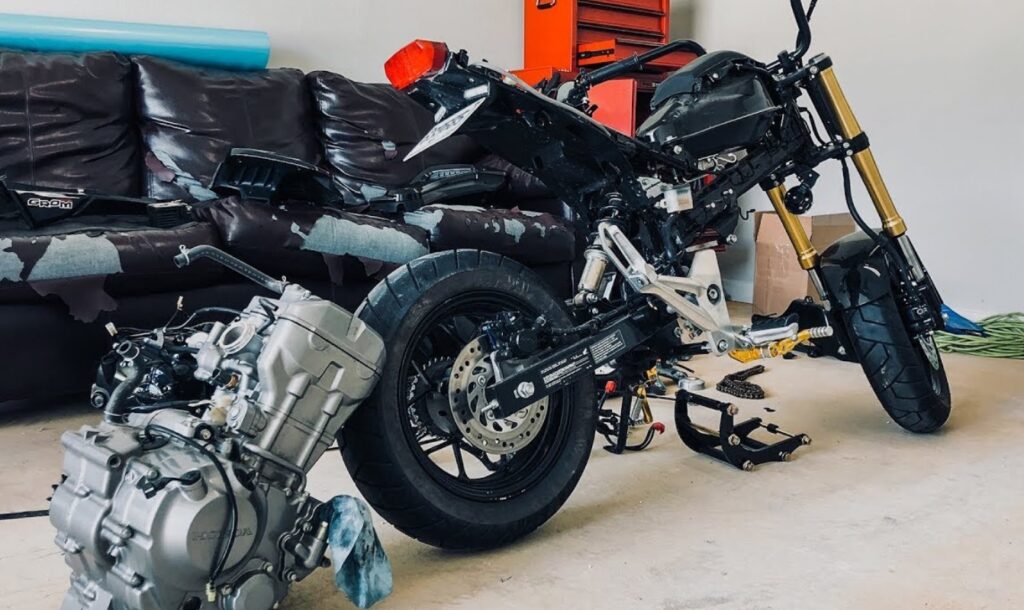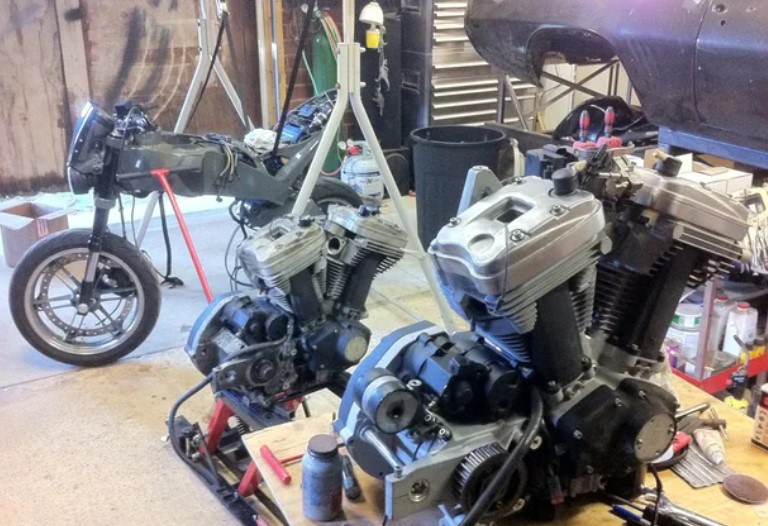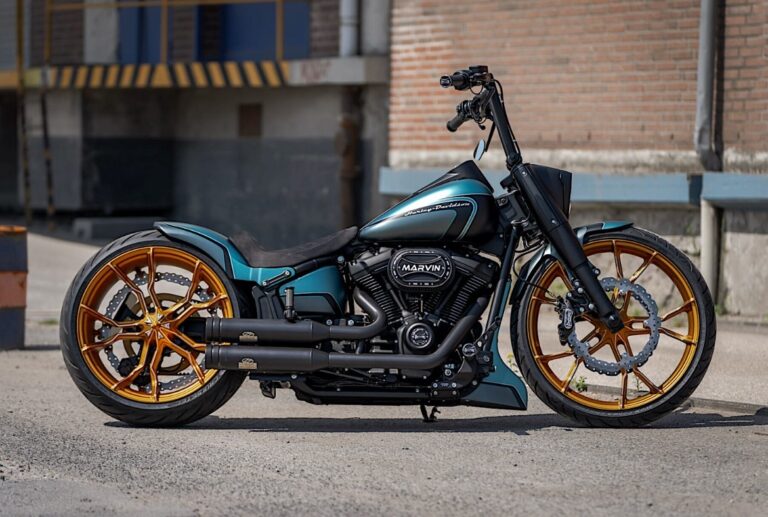How To Engine Swap A Motorcycle? 6 Easy Steps
Are you looking for How To Engine Swap A Motorcycle? Engine swapping in motorcycles is an exhilarating yet complex task. It involves replacing the existing engine of a motorcycle with a different one, often for enhanced performance, power, or customization. This guide delves into the detailed process, ensuring that enthusiasts and mechanics can undertake this challenging yet rewarding task with confidence.
Key Takeaways
- Understand Compatibility: Ensure the new engine fits within your motorcycle’s frame and aligns with existing mounts.
- Acquire Necessary Tools: Have all the required tools and equipment on hand for a smooth process.
- Follow Safety Protocols: Always prioritize safety, using protective gear and following proper handling procedures.
- Be Patient and Precise: Engine swapping is intricate, requiring patience and attention to detail.
How To Engine Swap A Motorcycle?
Swapping the engine of a motorcycle involves a series of detailed steps that require mechanical skill, precision, and a thorough understanding of both your motorcycle and the new engine. Here’s a detailed breakdown of the process:

- Preparation and Research
- Ensure compatibility of the new engine with your motorcycle’s frame, mount points, and transmission system.
- Gather all necessary tools and equipment, including a basic toolkit, engine hoist, and motorcycle-specific tools.
- Removing the Old-Engine
- Disconnect the motorcycle’s battery to ensure safety.
- Drain all fluids from the engine, including oil and coolant.
- Remove the exhaust system by disconnecting it from the engine.
- Disconnect all electrical connections, ensuring to label them for later reattachment.
- Remove the engine mounts to detach the engine from the frame.
- Carefully lift or slide out the old engine from the motorcycle frame using proper lifting equipment.
- Installing the New Engine
- Inspect and prepare the new engine, ensuring it’s in good condition and compatible.
- Align the new engine with the motorcycle frame, using alignment pins or guides if necessary.
- Reattach the engine mounts to secure the engine to the frame, ensuring they are tightened properly.
- Reconnect all electrical components that were detached from the old engine.
- Reattach the exhaust system to the new engine.
- Refill all necessary fluids, such as oil and coolant.
- Reconnecting Engine Components and Testing
- Reconnect the battery.
- Test the engine by starting it and checking for any abnormal noises or vibrations.
- Depending on the specific swap, additional fine-tuning and adjustments might be necessary, like adjusting carburetors or tuning the fuel injection system.
- Safety and Compliance
- Ensure the modifications comply with local vehicle laws and emission standards.
- Update the motorcycle’s registration and insurance details to reflect the engine swap.
- Post-Swap Checks and Maintenance
- Regularly monitor engine health and performance.
- Maintain a stricter servicing schedule initially to ensure smooth operation.
This procedure requires not only technical knowledge but also patience and attention to detail. If you’re unsure about any aspect of the process, seeking assistance from a professional mechanic is highly recommended.
Assessing Engine Compatibility
Understanding the compatibility of the new engine with your motorcycle model is crucial. The size, mount points, and connections should align perfectly to avoid any structural or functional issues.
Factors to Consider
- Size and Space: The engine should fit within the motorcycle’s frame without modifications.
- Mount Points: The new engine should align with the existing mount points.
- Transmission and Drive Compatibility: Ensure the engine’s output shaft aligns with your bike’s transmission and drive system.
Gathering Necessary Tools and Equipment
Having the right tools is essential for a smooth engine swap. This includes basic hand tools, engine hoists, and specific motorcycle tools.

Essential Tools
- Basic Toolkit: Wrenches, screwdrivers, and pliers.
- Engine Hoist or Lift: For safely removing and installing the engine.
- Motorcycle-Specific Tools: Chain breakers, clutch alignment tools, etc.
Removing the Old-Engine
The first step is to safely remove the existing engine. This involves disconnecting all attachments, draining fluids, and carefully lifting the engine out.
Step-by-Step Removal
- Disconnect Battery: Always start by disconnecting the battery.
- Drain Fluids: Remove oil, coolant, and fuel.
- Detach Connections: Unhook all electrical and mechanical connections.
- Lift Out the Engine: Use an engine hoist or lift to remove the engine safely.
Installing the New Engine
Installing the new engine requires precision and careful alignment. Ensure all connections are secure and that the engine is properly mounted.
Installation Steps
- Position the Engine: Carefully lower the new engine into the frame.
- Align and Secure Mounts: Attach the engine to the frame at all mount points.
- Reconnect Systems: Reattach all electrical, fuel, and mechanical systems.
Legal and Safety Considerations
Be aware of the legal implications of engine swapping. Check local regulations regarding engine modifications. Always prioritize safety during the process.

Legal and Safety Tips
- Check Local Laws: Ensure your modifications comply with local vehicle laws.
- Use Protective Gear: Always wear appropriate safety equipment.
- Follow Proper Procedures: Adhere to recommended safety protocols throughout the process.
Fine-Tuning for Performance
After installing the new engine, fine-tuning is critical to extract maximum performance. This involves more than basic adjustments; it’s about harmonizing the new engine with your motorcycle’s ecosystem.
Optimizing Engine Settings
- EFI Tuning: For modern motorcycles with Electronic Fuel Injection (EFI), tuning the ECU is vital for optimal engine performance.
- Exhaust System Tweaks: Adjusting or replacing the exhaust system can significantly impact engine efficiency and sound.
Handling and Suspension Adjustments
- Suspension Tuning: The new engine may alter the bike’s dynamics, necessitating suspension adjustments for balanced handling.
- Brake System Upgrade: Sometimes, a more powerful engine requires an upgraded brake system for enhanced safety and performance.
Post-Swap Maintenance
Maintaining your motorcycle post-engine swap ensures longevity and reliability. Regular checks and maintenance routines are essential.
Routine Checks
- Engine Health Monitoring: Regularly check engine oil, coolant levels, and other fluids.
- Bolt and Mount Inspection: Frequently inspect engine mounts and bolts for any signs of loosening or wear.
Long-Term Maintenance
- Regular Servicing: Follow a stricter servicing schedule initially to ensure the new engine is running smoothly.
- Performance Monitoring: Keep an eye on performance metrics like fuel efficiency and power output to detect any issues early.
Overcoming Common Challenges
Engine swapping can present numerous challenges, from technical difficulties to regulatory hurdles.

Technical Difficulties
- Electrical Challenges: Integrating the new engine’s electrical system with the existing motorcycle can be complex, especially with older models.
- Custom Fabrications: Sometimes, custom parts or modifications are needed to fit the new engine or to enhance performance.
Regulatory Challenges
- Emission Standards Compliance: The new engine must comply with local emission standards.
- Registration and Insurance: Updating your motorcycle’s registration and insurance to reflect the engine swap is crucial.
Importance of Post-Swap Testing
Testing your motorcycle after an engine swap is not just about ensuring everything works; it’s about safety and performance optimization.
Safety Testing
- Brake and Handling Tests: Ensuring that the motorcycle’s brakes and handling are in sync with the new engine’s power.
- Leak and Safety Checks: Inspecting for any leaks or potential safety hazards before taking a longer ride.
Performance Optimization
- Dyno Testing: A dynamometer test can provide valuable data on the engine’s performance and help in further tuning.
- Real-World Riding: Nothing beats testing your bike under various real-world conditions to ensure it performs as expected.
Is It Possible To Swap Engines In A Motorcycle?
Yes, it is indeed possible to swap engines in a motorcycle. This process, often undertaken by motorcycle enthusiasts, can significantly enhance the bike’s performance or replace an old, worn-out engine with a more robust one.

Engine swapping offers a renewed vitality and capability to a motorcycle. However, success in this endeavor hinges on several critical factors, including the physical size of the new engine, compatibility with the motorcycle’s frame, mount points, and the alignment of the transmission and drive systems.
How Hard Is It To Do An Engine Swap Yourself?
Engine swapping on a motorcycle is not a trivial task. It demands technical expertise, a thorough understanding of both the existing and new engines and meticulous attention to detail.
If you are considering an engine swap, it’s essential to approach this project with caution and proper knowledge.

It involves several steps, such as researching and planning the process, gathering necessary tools and equipment, disconnecting and removing the old engine, preparing the new engine, installing it, and finally testing and making necessary adjustments for optimal performance and safety.
Given the complexity and potential risks involved, if there’s any uncertainty at any step of the process, consulting a professional mechanic is strongly advised to avoid potential issues or accidents.
Can You Put In New Engine In A Motorcycle?
Putting a new engine in a motorcycle is a feasible task, often referred to as engine replacement or engine upgrade. This process involves removing the existing engine and replacing it with a different one, which could be for reasons like improving performance, increasing power, or replacing a faulty engine.
The process is comprehensive and involves disconnecting the battery, draining fluids, removing the old engine, preparing the new engine, aligning it with the motorcycle frame, reattaching engine mounts, reconnecting electrical components, installing the exhaust system, refilling fluids, and finally reconnecting and testing all engine components.
It’s essential to ensure that the new engine is in proper working condition and aligned correctly with the motorcycle frame for a successful swap. Post-installation, the engine needs to be tested for smooth operation and may require fine-tuning and adjustments depending on the specific engine swap and motorcycle model.
Conclusion
Successfully swapping a motorcycle engine can be a fulfilling endeavor. It requires meticulous planning, precision, and adherence to safety protocols. By following this guide, you can transform your motorcycle, giving it a new life with enhanced performance and a personalized touch. Remember, patience and attention to detail are key to a successful engine swap.
People Also Ask
Are Engine Swaps on Motorcycles Legal?
The legality of engine swaps varies by region and is often governed by emission standards, safety regulations, and vehicle modification laws. Always research and comply with local laws to ensure your modified motorcycle is street-legal.
How Often Should I Service My Motorcycle After an Engine Swap?
Initially, service the motorcycle more frequently to ensure the new engine is functioning properly. Once you’re confident in its performance and reliability, you can follow a standard service schedule, although keeping a closer eye on its performance is advisable.
Do I Need to Update My Motorcycle’s Registration After an Engine Swap?
In most regions, yes. Engine swaps usually require updating the motorcycle’s registration documents to reflect the changes. It’s important to check local regulations and comply with them to avoid legal issues.
How Does an Engine Swap Affect a Motorcycle’s Handling?
An engine swap can significantly affect a motorcycle’s handling due to changes in weight distribution and power output. Post-swap, it’s crucial to adjust the suspension and possibly the braking system to accommodate the new engine.
What Are the Most Common Challenges During a Motorcycle Engine Swap?
Common challenges include fitting the engine into the frame, integrating the new engine’s electrical system, and ensuring the engine is compatible with the motorcycle’s transmission and drive systems. Overcoming these requires careful planning and sometimes custom fabrication.

Welcome to the exhilarating world of Matt Rex, a professional car racer turned renowned vehicle enthusiast. Immerse yourself in his captivating blog as he shares heart-pounding adventures, expert reviews, and valuable insights on cars, trucks, jets, and more. Fuel your passion for speed and discover the beauty of vehicles through Matt’s engaging stories and meticulous expertise. Join the ever-growing community of enthusiasts who find inspiration and expert advice in Matt Rex’s blog—a digital hub where the thrill of speed meets the pursuit of knowledge.







